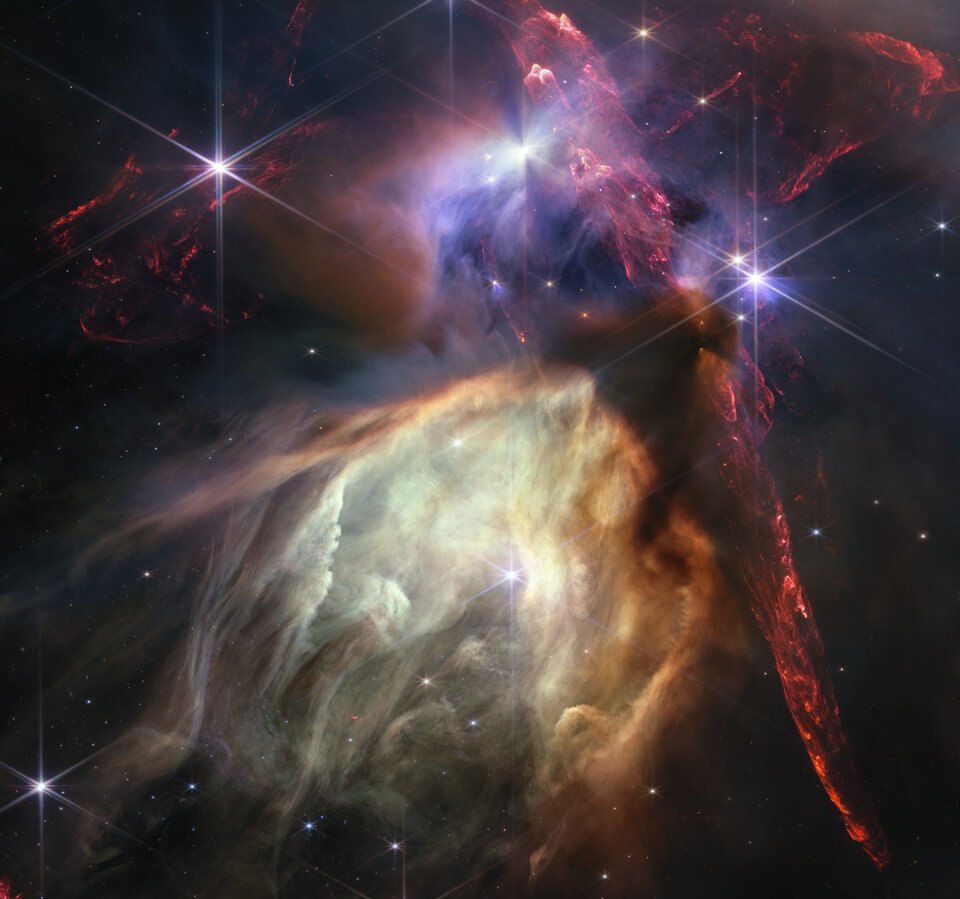WEBB IS ONE!
The year since Webb became operational has flown by. Not least for ESA who just released this new star forming region image to mark the first anniversary of the infrared astronomy deep space telescope’s mission…
By the time Webb became operational a year ago, Space Rocks followers were already well versed with its capabilities and what its mission was likely to achieve. Back in 2021 before Webb’s launch, during Uplink episode 49, we were incredibly lucky to speak to astrophysicist John Mather, NASA Senior Project Scientist for Webb and Ewine van Dishoeck, a senior member of Webb’s MIRI team, about the mission parameters. Then in Uplink 60 we were joined by ESA experts, Propulsion Engineer Kate Underhill and Instrument & Calibration Scientist Sarah Kendrew who walked us through the launch of Webb which took place on Christmas Day, 2021 from ESA’s spaceport in French Guiana.
Following the launch, as Webb readied to deploy and start its mission, we were joined for Uplink 62 by Exoplanetary Astronomer Hannah Wakeford and Planetary Astronomer Heidi B. Hammel who discussed how our solar system’s planets and planets orbiting other stars would be observed by Webb – a hugely ambitious joint mission of NASA, ESA, and CSA, and the most powerful space telescope ever built.
This unprecedented and incredible image literally illustrates the depth of the Webb mission. It shows the closest sun-like star forming region – known as the Rho Ophiuchi cloud formation – to Earth. It’s 390-light-years away from us, but has been captured in close-up detail by Webb.
Webb’s new image shows a region containing approximately 50 young stars, all of them similar in mass to the Sun. The darkest areas are the densest, where thick dust cocoons still-forming protostars. Huge red bipolar jets of molecular hydrogen dominate the image, appearing horizontally across the upper third and vertically on the right. These occur when a birthing star first bursts through its envelope of cosmic dust, shooting out a pair of opposing jets into space. In contrast, the star S1 has carved out a glowing cave of dust in the lower half of the image. It is the only star in the image that is significantly more massive than the Sun.
Some stars in the image display tell-tale shadows indicating protoplanetary discs – potential future planetary systems in the making.
So is the first year of Webb’s operation being hailed as a success? Having exceeded expectations, undoubtedly. But as ESA have stated, the mission is only just getting started…

